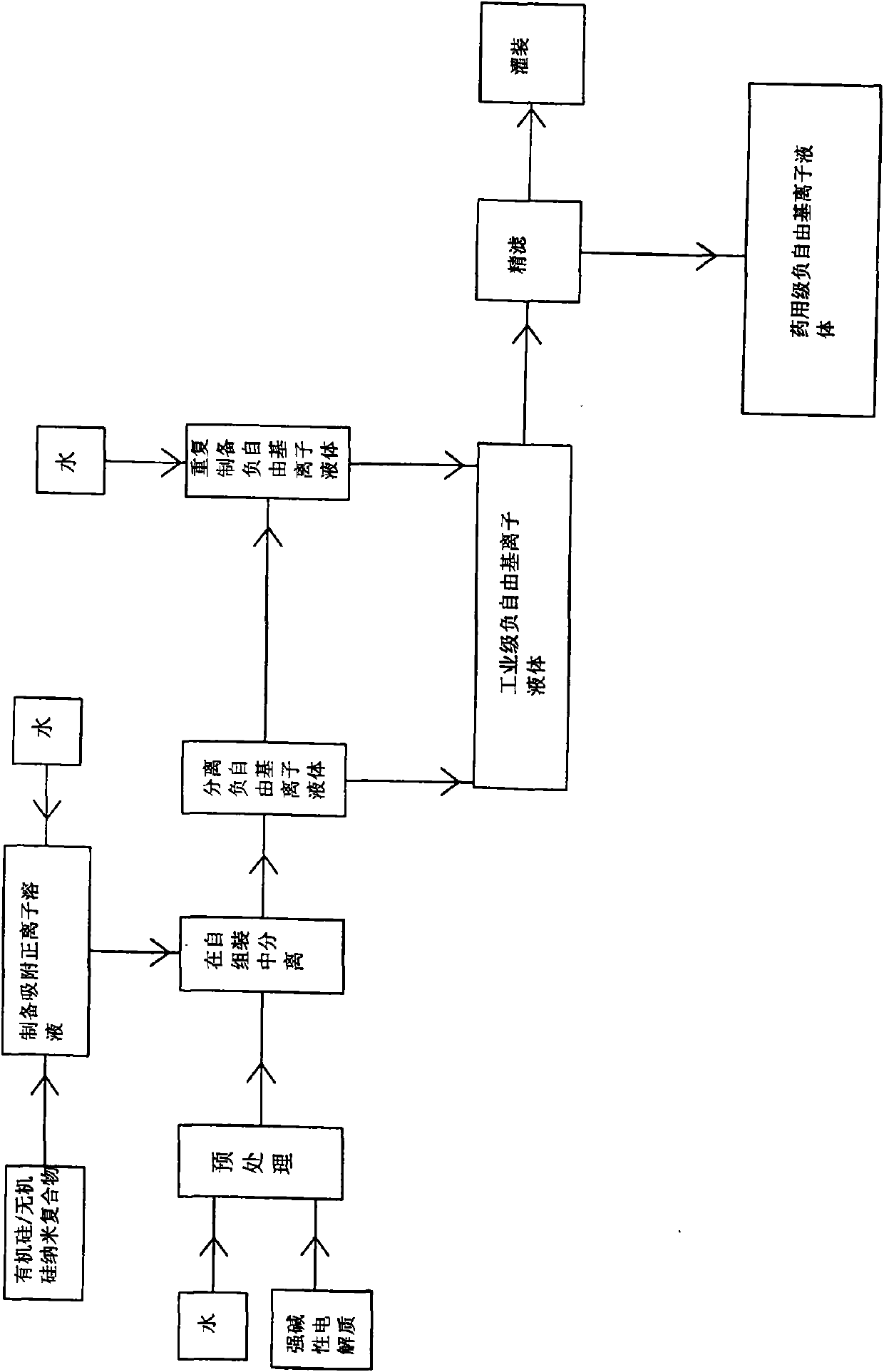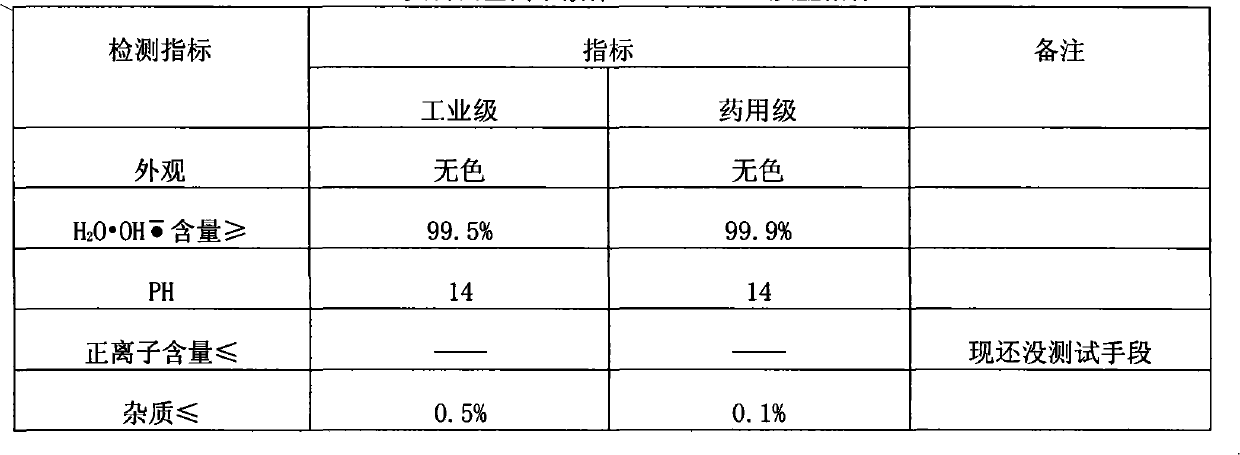Negative radical ionic liquid and self-assembly ion isolation process
A technology of ionic liquid and ion separation, applied in nanoscience and field, can solve problems such as secondary pollution
- Summary
- Abstract
- Description
- Claims
- Application Information
AI Technical Summary
Problems solved by technology
Method used
Image
Examples
Embodiment 2
[0121] Step 1: Strong Alkaline Electrolyte Pretreatment
[0122] Take 9.5Kg of calcium oxide, digest it with 200Kg of hot water at 80+-5°C, and then filter to remove the residue.
[0123] stand-by.
[0124] Step 2: Preparation of Adsorption Positive Ion Solution
[0125] Take 7Kg of organosilicon / inorganic silicon nanocomposite and 25Kg of deionized water, add them into the reaction kettle respectively, heat up to 90+-5°C, keep the temperature constant until it melts and dissolves, the conversion process is the same as Example 1.
[0126] Step 3: Self-Assembly and Dissociation in Repeated Ionization
[0127] Self-assembly is divided into two levels, one level is the self-assembly of negative radical ions; the other level is the self-assembly of positive ions. In the positive ion self-assembly process, the two levels of self-assembly are crossed and repeated. Through two levels of self-assembly, positive and negative ions are separated.
[0128] 1 Self-assembled negative r...
PUM
 Login to View More
Login to View More Abstract
Description
Claims
Application Information
 Login to View More
Login to View More - R&D
- Intellectual Property
- Life Sciences
- Materials
- Tech Scout
- Unparalleled Data Quality
- Higher Quality Content
- 60% Fewer Hallucinations
Browse by: Latest US Patents, China's latest patents, Technical Efficacy Thesaurus, Application Domain, Technology Topic, Popular Technical Reports.
© 2025 PatSnap. All rights reserved.Legal|Privacy policy|Modern Slavery Act Transparency Statement|Sitemap|About US| Contact US: help@patsnap.com



